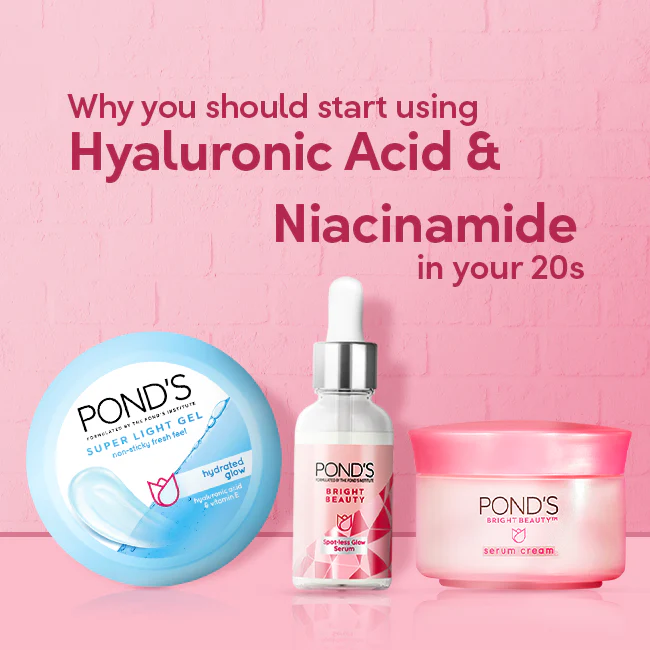
Can I Use Hyaluronic Acid and Niacinamide Together?
When it comes to skincare, hyaluronic acid and niacinamide are two highly regarded ingredients that are known for their impressive skin benefits. But can these powerhouse ingredients be used together? That’s exactly what we’ll explore today, so let’s dive in and find out more.
What is Niacinamide?
Niacinamide, also known as vitamin B3, is a versatile skincare ingredient celebrated for its ability to deeply hydrate the skin. As a humectant, it helps draw moisture from the environment and lock it into the skin, keeping the skin hydrated and plump. One of the unique benefits of niacinamide is its ability to regulate sebum production, making it an excellent choice for those with oily or blemish-prone skin.
What is Hyaluronic Acid?
Hyaluronic acid is another powerful humectant that helps keep the skin hydrated by drawing moisture from the environment into the skin. It strengthens the skin’s protective barrier, improving its ability to defend against environmental stressors like UV rays, pollution, and free radicals. Additionally, hyaluronic acid helps reduce signs of dehydration, leaving the skin looking bright, smooth, and youthful.
Now that we’ve covered the basics of each ingredient, let’s explore how they work together in your skincare routine.
Can Hyaluronic Acid Be Used with Niacinamide?
Yes, absolutely! Both hyaluronic acid and niacinamide are water-based ingredients, and they work beautifully together to keep the skin hydrated and balanced. To use them effectively in your routine, it’s recommended to apply hyaluronic acid first. This will help draw moisture into the skin, providing an immediate hydration boost. After that, you can apply niacinamide, which will help regulate sebum production and improve the overall skin texture. For more detailed tips on combining these two ingredients, check out our dedicated blog post.
What Should You Not Mix with Hyaluronic Acid?
Generally, there are very few ingredients that should be avoided when using hyaluronic acid. It’s suitable for all skin types and can be combined with a wide range of ingredients, including potent actives like retinol, salicylic acid, and glycolic acid. In fact, hyaluronic acid can be especially beneficial when used alongside these exfoliating ingredients, as it helps mitigate dryness and irritation that can often result from their use.
Do You Use Niacinamide Before or After Hyaluronic Acid?
When using both hyaluronic acid and niacinamide together, it’s best to apply hyaluronic acid first. This will hydrate the skin and lock in moisture. Following this, niacinamide can be applied to regulate sebum production and further improve the skin’s overall appearance. Alternatively, you can use hyaluronic acid in the morning to strengthen your skin barrier and niacinamide in the evening to repair and rejuvenate the skin, helping to combat damage caused by environmental factors like pollution and UV rays.
Which is Better: Hyaluronic Acid or Niacinamide?
Both hyaluronic acid and niacinamide are exceptional at improving the skin’s overall look and feel, but their benefits vary slightly depending on your skin’s needs. If you have oily or acne-prone skin, niacinamide may be more beneficial because it helps control sebum production and reduce the appearance of blemishes. On the other hand, hyaluronic acid is an all-around winner for maintaining hydration and is suitable for all skin types. Of course, there’s no reason you can’t use both together to help lock in moisture and keep your skin looking plump and radiant.
Can I Use Niacinamide Every Day?
Yes, niacinamide is well-tolerated by most people and can be used daily, even twice a day if desired. It’s particularly useful in the winter months when skin tends to become more dehydrated due to harsh climates and indoor heating. Using niacinamide twice a day can also help balance the drying effects of stronger actives like retinol and glycolic acid, leaving the skin feeling hydrated and healthy.
Can I Use Hyaluronic Acid Every Day?
Yes, hyaluronic acid is safe for daily use and can be applied twice a day. To get the most out of your hyaluronic acid products, it’s important to layer them correctly, starting with the thinnest consistency and working your way up to thicker formulas. For optimal results, apply hyaluronic acid to damp, cleansed skin. This will allow the ingredient to better attract and retain moisture, locking it into the skin’s barrier before you follow up with your moisturizer and SPF.
Is Niacinamide Good for Acne or Hyaluronic Acid?
Both niacinamide and hyaluronic acid can be beneficial for acne-prone skin, but if you’re choosing between the two, niacinamide might be the better option. Its ability to regulate sebum production can help balance oily skin and reduce breakouts. However, hyaluronic acid can still be very helpful for acne-prone skin, especially when combined with acne-fighting ingredients like salicylic acid, benzoyl peroxide, or retinol. These ingredients can be quite drying, and hyaluronic acid can help counteract that dryness by keeping the skin plump and hydrated.
Conclusion
I hope this post has helped clear up any questions you might have about using niacinamide and hyaluronic acid together. Both ingredients are incredibly effective on their own and when combined can provide your skin with hydration, balance, and a smoother texture. As always, if you have any additional questions or want more tips on skincare routines, be sure to follow us on Instagram for more!


